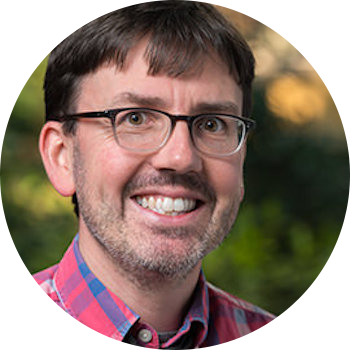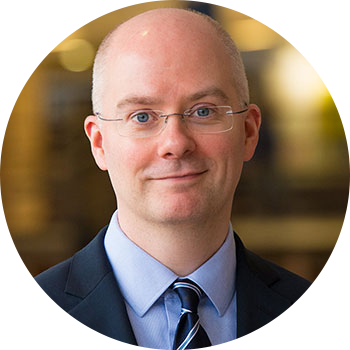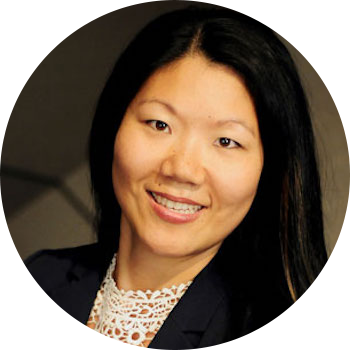Remote Instruction 101
Laurier's teaching community steps into the virtual classroom.
Search for academic programs, residence, tours and events and more.
Laurier's teaching community steps into the virtual classroom.

Through their dedicated preparation, including engagement in webinars, communities of practice and course (re)design modules, and their more recent application of refined remote instruction skills, Wilfrid Laurier University’s instructors have started to create a definition of remote teaching and learning at Laurier – one that is rooted in adaptability, empathy and community engagement.
In March 2020, colleges and universities across Canada and around the world had to face decisions about how to pivot their teaching and learning methods at a distance while upholding academic quality and ensuring the safety of students, faculty and staff.
“I’m so proud of Teaching and Learning’s professional teams of educational developers and technologists, instructional designers, learning strategists and consultants, and others who were highly responsive in developing resources to meet the changing needs and newly virtual touch-points between faculty members and students,” says Mary Wilson, vice-provost of Teaching and Learning.
Critical conversations about upholding academic quality and student experience during a fast-moving, once-in-a-generation pandemic continue today as Laurier’s teaching community evolves from an emergency response to a sustainable, engaging model of remote instruction at Laurier.
“Where we have seen the greatest success is when our faculty members find creative ways to bring themselves, their passion for their disciplines, and their deep knowledge of course materials into the remote learning environment – making the course come to life for students,” says Wilson.
“When faculty members like those we’re reading about today create that kind of instructor presence, and engage their students in authentic, active learning, our students can thrive.”
Learn more about what Laurier instructors have been doing in their virtual classrooms:

Kimberly Barber | Faculty of Music
After nearly 20 years of teaching music at Laurier, Kimberly Barber knew she would need to re-evaluate the way she had approached everything.
“In a way, seasoned faculty are beginners again and we need to go back to a beginner’s mindset,” says Barber. “It’s critical for us to examine our pedagogy, our learning outcomes, and our previously tried-and-true methods.”
Barber is a professor of voice, coordinator of the Opera program, and the Faculty of Music’s associate dean: external. One of the main challenges of virtual music-making is the latency built into video conferencing platforms like Zoom. The delay that people experience during video calls may lead to a more natural one-on-one conversation, but it creates a lag in musical collaborations, making typical in-person music-making elements such as harmonizing and instrumental accompaniments incredibly challenging (if not impossible).
Barber and her colleagues in the Faculty of Music took time to learn about the additional equipment, like microphones and side-view video cameras, that could assist in providing the best audio and visual quality for instructors and students. She cites pressure from the music industry as a primary reason that Zoom has been rapidly developing technology to improve the quality of music-making, including the introduction of audio settings for high-fidelity music and echo cancellation for more authentic music-making experiences.
“There are all kinds of little things you can do to improve the experience, so we’re trying to learn how to do all of it,” says Barber.
In reformatting the lessons of her opera course for remote delivery, Barber took the opportunity to build in digital skills development and hired a digital media professional to teach students how to compose their own high-quality videos. Students apply these skills to their remote assignments and to create their own professional video audition packages. Barber says this skillset will allow students to be future-ready because the music industry is moving toward remote auditions and virtual performances.
“Students are rising to the challenge by demonstrating their adaptability and ingenuity,” says Barber. “We have to keep our minds open so we are attentive to new possibilities.”
The idea of hands-on learning may seem counterintuitive in a physically distant classroom, but Laurier’s instructors are rising to the challenge to offer practical experiences for students learning remotely.
“My biostatistics course is meant to be an experience of the highs and lows of scientific data collection and analysis, and getting students to go out and collect data is an essential part of this process,” says Tristan Long, associate professor in the Department of Biology.
In lieu of a class field trip around campus, Long introduced a new group data collection assignment involving one of the most popular and accessible fruits in North America – bananas. By using bananas, which are widely available, students can see how many things they can quantify and measure using fairly common items in their household.
Long made a video with his two younger children in their home kitchen to show the students how they would collect their data from two bunches of bananas.
Watch this: BI393 Biostatistics data collection video.
Long also produces other engaging videos filled with cameos from his dog, Sadie, and two kids instead of a live lecture each week. Scheduled classes are then used as a time for students to share and discuss questions that came up when they watched the pre-recorded lecture material.
“I want to give students a chance to collaborate and help teach each other so they can really master the material,” says Long.
This flipped-classroom model – one where students review lecture material before meeting with the instructor – expands the capacity to work through course material both one-on-one with the instructor and with classmates.
“We need to make things comfortable, approachable and understandable while keeping engagement high,” says Long. “My main job right now is to do that while making things as uncomplicated as possible.”


Ken Jackson | Lazaridis School of Business and Economics
Earlier this term, the Ontario Ministry of Colleges and Universities awarded Ken Jackson with a Minister’s Awards of Excellence.
The Minister’s Awards of Excellence highlight the work done by professors and instructors on campus, online and in the community during these extraordinary times. Jackson was recognized for his open-door approach to communicating and engaging with students during a difficult period of transition.
In the days, weeks, and months after the initial decision to move courses to remote delivery in March, Jackson made himself available through weekly Zoom chats for his students. His calls with economics students led to wide-ranging conversations on subjects from tough course concepts to personal health and academic well-being. Jackson also contributed to the virtual first-year experience and hosted webinars over the summer for incoming students.
Jackson was also one of the hundreds of faculty members who took advantage of the webinars and support offered by colleagues in Teaching and Learning to continue to build and refine his remote teaching skills. He is currently teaching more than 1,700 students in a first-year introductory microeconomics course and continues to host meetings with students online every week.
Listen in: Ken Jackson is interviewed on episode 11 of the Nearly Verified Podcast, which is hosted by Laurier student Matt Puglisi.
Lisa Wood | English, Youth and Children’s Studies
Lisa Wood, an associate professor in English and the Youth and Children’s Studies program, makes it a priority to take time during each class to check-in with students and share how the adjustment to remote teaching during this public health crisis is affecting her both personally and as an instructor.
“It’s important to address the elephant in the room,” says Wood. “I think students appreciate when you’re real with them and can model an ability to go with the flow.”
She engaged in the Course (Re)Design program offered by educational developers in Teaching and Learning in preparation for teaching Romantic Radicals and Children, Toys and Media this fall. Wood says that the choices available in remote course delivery were overwhelming at first.
“It reminded me of the early days of teaching when I was discovering new ways of doing things all the time,” says Wood.
Wood surveyed students before the term began to give them a chance to share information about their living and learning environments, as well as their access to technology and reliable internet. Since then, she has continued to use anonymous polls and surveys to figure out their preferences and refines her approach based on student feedback.
“I want to be there for my students as much as possible,” says Wood.
To create a sense of community during class meetings on Zoom, Wood encourages students to use images of things that are important to them, like their pets or the logo from their favourite sports team, as their profile images to create a sense of personal connection amongst the class.
“The first class, all these pets were popping up,” says Wood. “It’s a small thing but it provides some much-needed personal connection.”


Robert McLeman | Geography and Environmental Studies
“When remote learning is done well, the content allows a student to engage on a more personal or intimate level with the subject at hand,” says Robert McLeman, professor in the Department of Geography and Environmental Studies.
McLeman is currently teaching Environment, Sustainability and Society, a first-year environmental studies class comprised of two cohorts of 200 students. To encourage student engagement in weekly modules, McLeman recorded introductory videos to “launch” the theme for each week of class. Videos are recorded in forests around his home and sometimes in his house. For example, in the “Where Does Toilet Waste Go?” module, McLeman talks to students from the bathroom.
Watch this: Where does toilet waste go?
In an effort to help students make a personal connection to the course concepts, McLeman has introduced new, fun assignments based on the weekly themes. His creative “choose your own” assignment options encourage students to design playlists, memes and travel posters, tapping into students’ creativity to encourage a deeper understanding of the relevance of key issues of sustainability, like biodiversity, food systems and climate change.
“This environment gives us a chance to provide students with more influence and control over their learning,” says McLeman. “We may not be together in the same room, but we can still create really meaningful connections.”
Bruce Gillespie | Digital Media and Journalism (DMJ)
“I’ve adapted my Digital Media and Journalism Capstone course this fall to provide students with the opportunity to undertake reporting about how they, their peers and their communities are affected by and responding to the pandemic,” says Bruce Gillespie, program coordinator and associate professor of Digital Media and Journalism.
“We’re focusing on how to report and share stories safely and remotely, which includes producing interviews with other Laurier Brantford students for the One Market podcast.”
Gillespie also won a Minister’s Award of Excellence in recognition for his work to keep Laurier’s Brantford campus connected through the One Market Podcast. He joins Ken Jackson as two of 39 recipients selected out of more than 260 submissions in the areas of digital transformation and community impact.
Listen in: Episode 7 and episode 9 of the One Market podcast produced by fourth-year DMJ students in the capstone course.


Kira Omelchenko | Faculty of Music, Laurier Symphony Orchestra
“I'm most proud of our students and how they're embracing technology and adjusting to remote learning with patience, understanding and flexibility,” says Kira Omelchenko, associate professor in the Faculty of Music and conductor of the Laurier Symphony Orchestra. “They inspire me to be creative, think outside the (Zoom) box, and try new things.”
Thanks to the opportunities afforded by a virtual environment, Omelchenko was able to partner with Randolph College for the Performing Arts and dancers from Martha Hicks School of Ballet for a video featuring Laurier orchestral students.
Watch this: Students from the fall Community Music Ensemble showcase their talents.
Omelchenko is also facilitating a cross-departmental project with students in Laurier’s Department of Film Studies, who are producing and editing videos with the orchestra. She is also cultivating more connections within other areas of the Faculty of Music by featuring the orchestra students in selected musical excerpts and various creative technology projects.
“We are making the most of the circumstances, accepting the things that we cannot change, and finding the opportunities in the obstacles.”